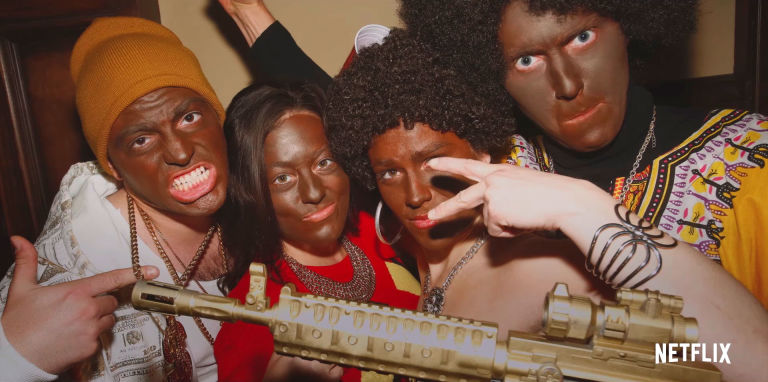Dear White People: It’s really not about you…
But it’s definitely for you & you do need to take notice! Netflix has added a show that is revealing of how some things really…
But it’s definitely for you & you do need to take notice!
Netflix has added a show that is revealing of how some things really have not changed in America.
Dear White People is a spinoff from the 2014 film, focusing on radio host Samantha White as she and her friends address the racism they face every day at their predominantly white college. Many subscribers of Netflix were upset about the supposed “white genocide” being inflicted on them, not even noticing that such narcissistic views were just what the show was attempting to address.
Following the release of the trailer, many uninformed subscribers cancelled their accounts and chimed in on Twitter and other social media platforms to express their disgust. Their main issues with the concept being irrational; the show illustrates what people of color go through on a daily basis. God forbid people of color have an outlet to express their pain. Or maybe it is just white people trying to suppress any expression of a maligned minority as usual.

Let’s break down what the show addresses.
The first episode is based on Samantha White explaining why her skin color is not a costume after a party at white upper class fraternity Pastiche. At this party, the theme was black face. Even though later in the show we find out who organized the party, it does not matter. Because what happened was privileged white people thinking wearing black skin is a joke; something to be made fun of and trivialized.

Skin color is a big theme in the show. If you are too light skinned, you are not considered black enough. If you are too dark you are not pretty enough. Early in the episode, Coco calls out Samantha for having light-skinned privilege. And we find out Coco has always been looked down upon for her darker skin tone. Most men ignore her. Like when future student body president Troy ignores Coco for Samantha.
The show addresses the way that black culture is portrayed. Lionel Higgins is everything considered “not cool”. He’s a nerd, and questioning his sexuality. In a scene at a Halloween party, Lionel is dressed as a character from Star Trek, and of course mocked by other people of color. People of color have been so used to being put in a box and treated a certain way that they even stereotype themselves. If they aren’t within the status quo of behavior and acting a certain way, then they are considered a white washed out version.

Coco is present at the notorious party, and Samantha is as well with a camera in tow. When Coco runs into her she exclaims “These people don’t give a f*ck about no muthaf*ckin’ Harriet Tubman!” she yells. “They spend all their money on their lips, their tans, their ass, their Kanye tickets, because they wanna be us. And for one night, let ‘em! I am not gonna protest a damn Halloween party.” White people want to look like people of color, while shaming people of color for what they look like. And that shame makes people of color have idealization of what beauty is, causing them to shame themselves and others.
But the scariest episode is the most truthful. A college party turns south, when a white friend of character Reggie (Addison) repeats the N-word while singing along to a song. When Reggie and crew begin to explain how because the word is in a song, it is still not okay to say it. The explanation leads to an argument, shouting ensues and the police become involved. Because of Reggie’s skin color, the police officer’s gun is pointed at him. Even after Reggie explains countless times that he is a college student, the officer (really security guard with a gun) won’t put down his weapon, pointed at Reggie’s chest. The episode is not only a theme for the show, but one in real life; where skin color can be the prevalent factor that decides if you live or die.
Targeting or castigating white people was not the outcome Dear White People wanted. It sought to shine a light on the inequality and the reality of being a minority, especially black person in America. It explained the ways that white people have shaped the negativity in their culture, how white Americans who claim to be “woke” are not what they seem and sadly how racism still exists.
Disclaimer: The views, opinions and positions expressed by the authors and those providing comments, opinions on this website are theirs alone, and do not necessarily reflect the views, opinions or positions of M-Lifestyle and their affiliates. M-Lifestyle does not claim ownership of any images used, unless otherwise specified.
![]()







Comments